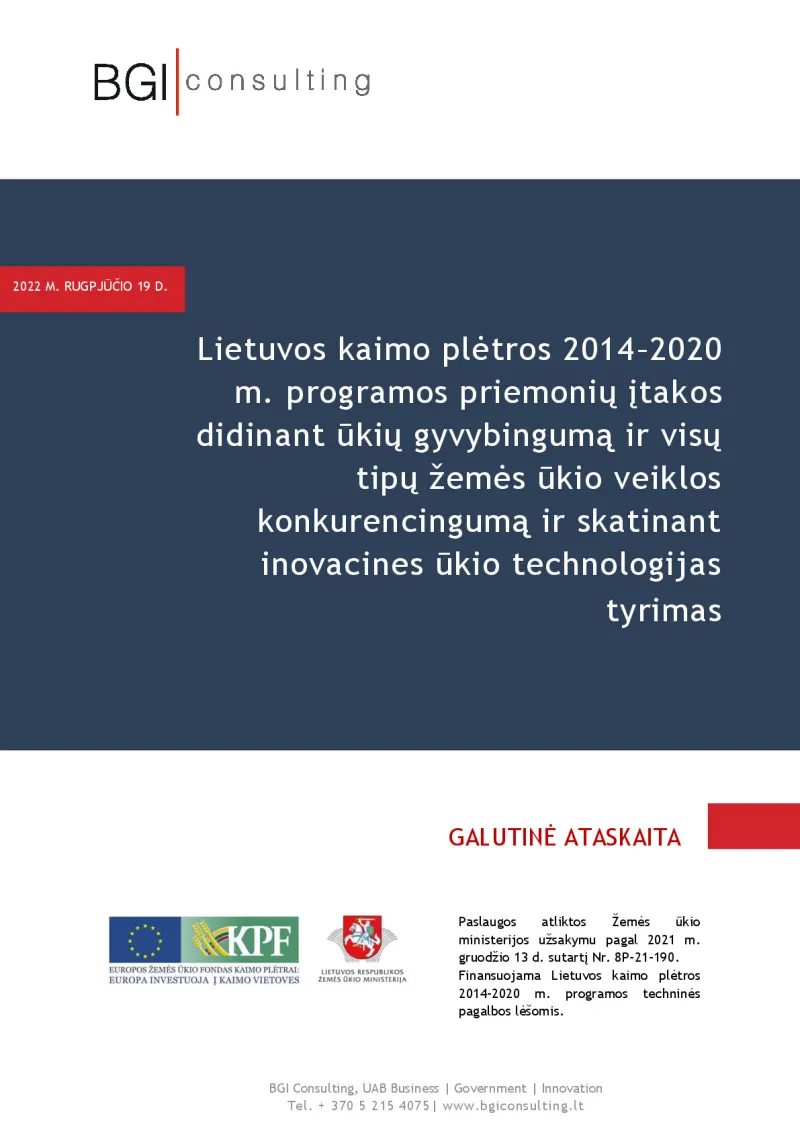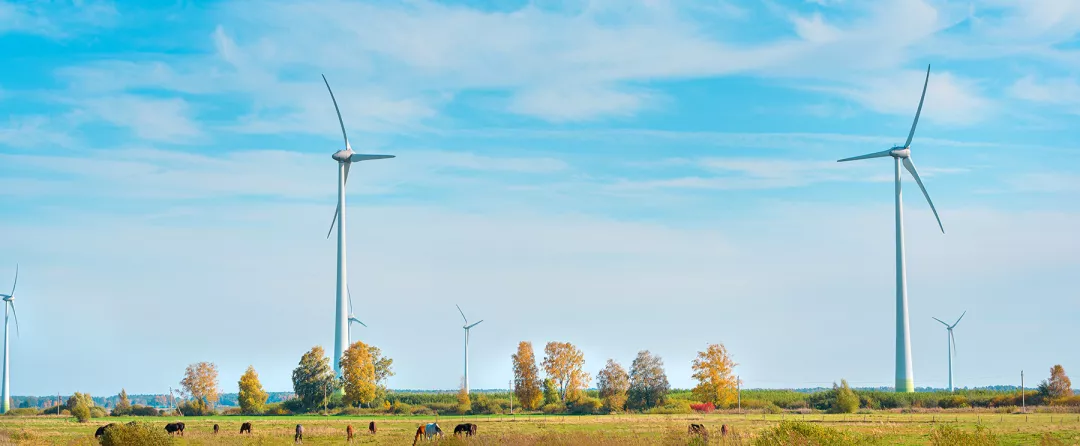Evaluation of the impact of enhancing farm viability and competitiveness and promoting innovative farm technologies
- Evaluation
- Smart Villages
- Jobs, Growth and Equality in Rural Areas
- Environment
- Agricultural Productivity
- Sustainability
- Evaluation
- Cross-cutting Impacts
- Fostering Knowledge & Innovation
The study mainly focuses on investments that directly contribute to the Lithuanian Rural Development Programme’s second priority implementation.
- Lithuania
- 2014-2022
- Cross-cutting impacts


The study aimed to evaluate the contribution of the 2014-2020 Lithuanian Rural Development Programme (RDP) measures on implementing the second priority, specifically those that directly contribute to investments in three focus areas (2A, 2B and 2C+).
The evaluation covered seven measures (M) and 14 sub-measures (activities) of the RDP, including M01 (knowledge transfer and information), M02 (advisory services, farm management and relief services), M04 (investments in physical assets), M06 (farm and business development (business start-up aid for young farmers - code: 6.1; business start-up aid for the development of small farms - code: 6.3)), M08 (investments in forest area development and improvement of the viability of forests), M16 (cooperation), and M21 (exceptional temporary relief to farmers and SMEs active in processing, marketing and/or development of agricultural products particularly affected by the COVID-19 crisis).
The study, which covers the period 2014-2021, was commissioned by the Ministry of Agriculture of the Republic of Lithuania and prepared by BGI Consulting.
The scope of the study covered measures that directly and indirectly contribute to the implementation of the RDP’s second priority. Measures that directly contributed to the mentioned goals included investments in RDP’s second priority focus areas: 2A 'Improving the economic performance of all farms and facilitating farm restructuring and modernisation, notably with a view to increasing market participation and orientation as well as agricultural diversification'; 2B 'Facilitating the entry of adequately skilled farmers into the agricultural sector and, in particular, generational renewal'; and 2C+ 'Improvement of economic value of forestry and development of forest areas'. Measures that indirectly contributed included investment and area support from RDP’s other priorities, CAP’s Pillar I support and national budget support.
The main qualitative and quantitative methods applied for the study are the analysis of strategic documents, secondary sources, semi-structured interviews and quantitative questionnaire survey data analysis.
The counterfactual impact evaluation was used to analyse sub-measure M04.1 (Investment in agricultural holdings). This method made it possible to calculate the net effect of modernisation investments on beneficiaries' holdings by comparing the latter’s economic size (economic size of holding hereinafter 'HES') development with those of identical holdings that did not receive support.
The report briefly describes some data gaps (see section 4.6—response to evaluation question 10.1.8). Evaluators could not access micro-level FADN data for counterfactual analysis, making the calculation of the net impact on the CMEF indicators difficult.
Instead of FADN data and CMEF indicators, evaluators utilised intermediate indicators and data regarding agricultural holdings obtained from the database of the Agricultural Information and Rural Business Centre (known as the Agricultural Data Center since 3 January 2023).
The evaluators pointed out that indicators that measure the extent of cooperation in Lithuania by different cross-sections (size of holding, age of farmer, etc.) are scarce. This makes it challenging to define the types of holdings and farmers who are most likely to cooperate.
The availability of indicators to measure the diffusion, depth and application of innovation in the agricultural sector was relatively limited. Thus, only qualitative analysis of innovation was possible, which is considered less reliable.
The report includes detailed evaluation findings for different interventions. The achievements are analysed at the micro (farm) and macro (agricultural sector and its subsectors) levels.
Evaluators conclude that some findings show the paradoxical situations when high micro-level performance at the micro level and large-scale investments do not transform into an increase in competitiveness and viability on the scale of the whole agricultural sector. In the case of small farms, this is explained by the small scale of investments. The analysed focus area 2A support reached 17% of all small farms, 19% of all mid-sized farms and 46% of large-scale farms.
The socio-economic indicator analysis has shown that from 2013 to 2020, the viability and productivity of small-scale farms and most livestock subsectors worsened or were worse than those of other farm-size groups or supported sectors.
The counterfactual analysis of the investments in sub-measure M04.1 showed that the investments have significantly improved the beneficiaries' competitive position and economic performance.
The analysis of the competitiveness index reviewed the progress of competitiveness of Lithuanian agriculture at the EU level in 2014-2021. The evolution of the indicators for the sustainability of farming in the competitiveness index and the competitiveness of farming resources indicates that Lithuania’s position in the EU has improved from 2014 to 2020. On the other hand, Lithuania's position in the competitiveness of the performance of farming activities has declined. The deterioration of Lithuania's position in the competitiveness performance dimension has resulted in a decline in Lithuania's overall competitiveness index at the EU level (this decline is evidenced by Lithuania’s drop from 18th place in 2014 to 20th place in 2020). Thus, although Lithuania's agricultural sustainability and resource conditions have been improving, and investments under RDP’s second priority have contributed to this improvement, the breakthrough has not been sufficient to increase Lithuania's competitiveness performance (i.e. productivity, level of output) at a faster rate than in most Member States.
Author(s)
BGI consulting